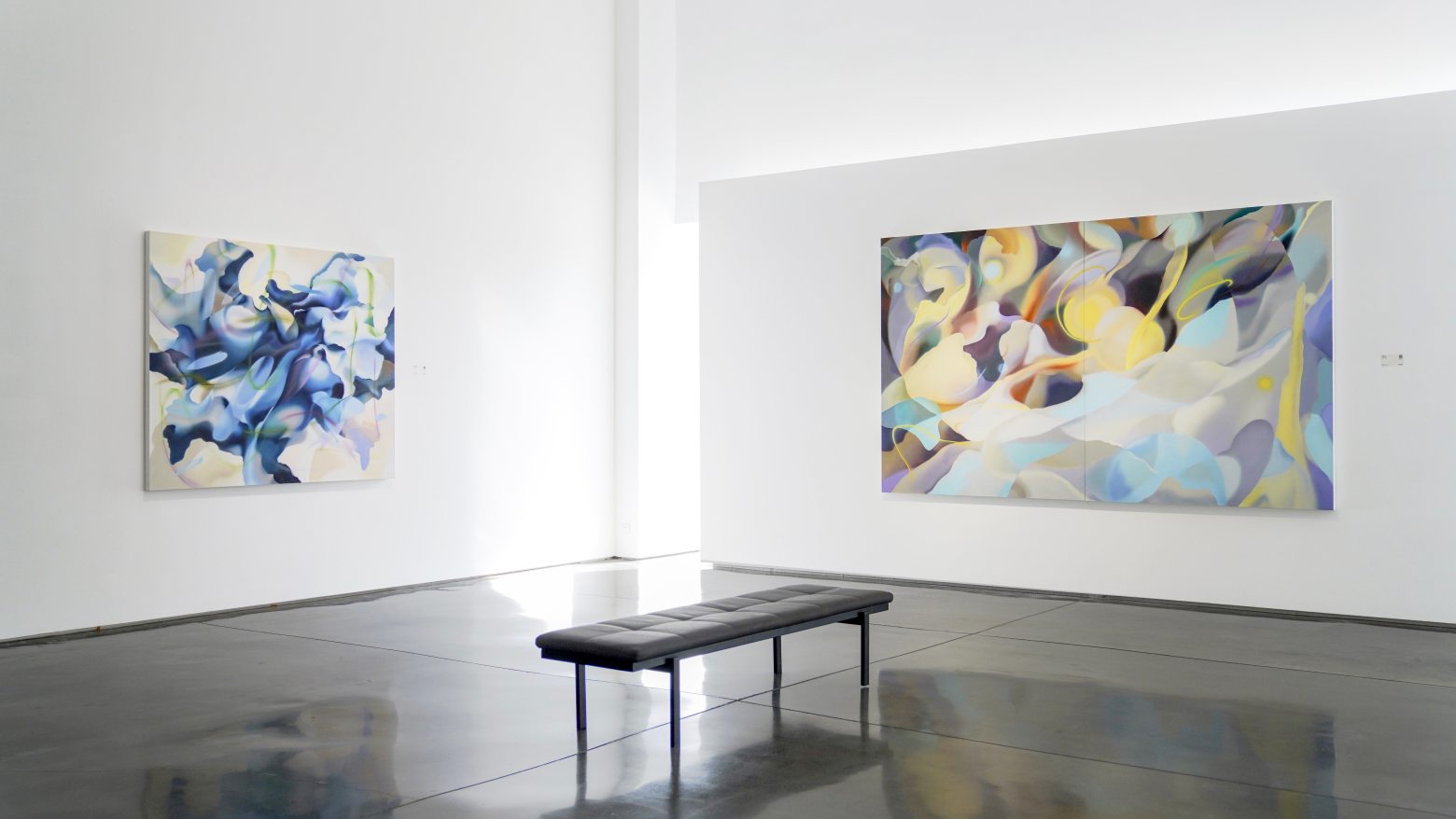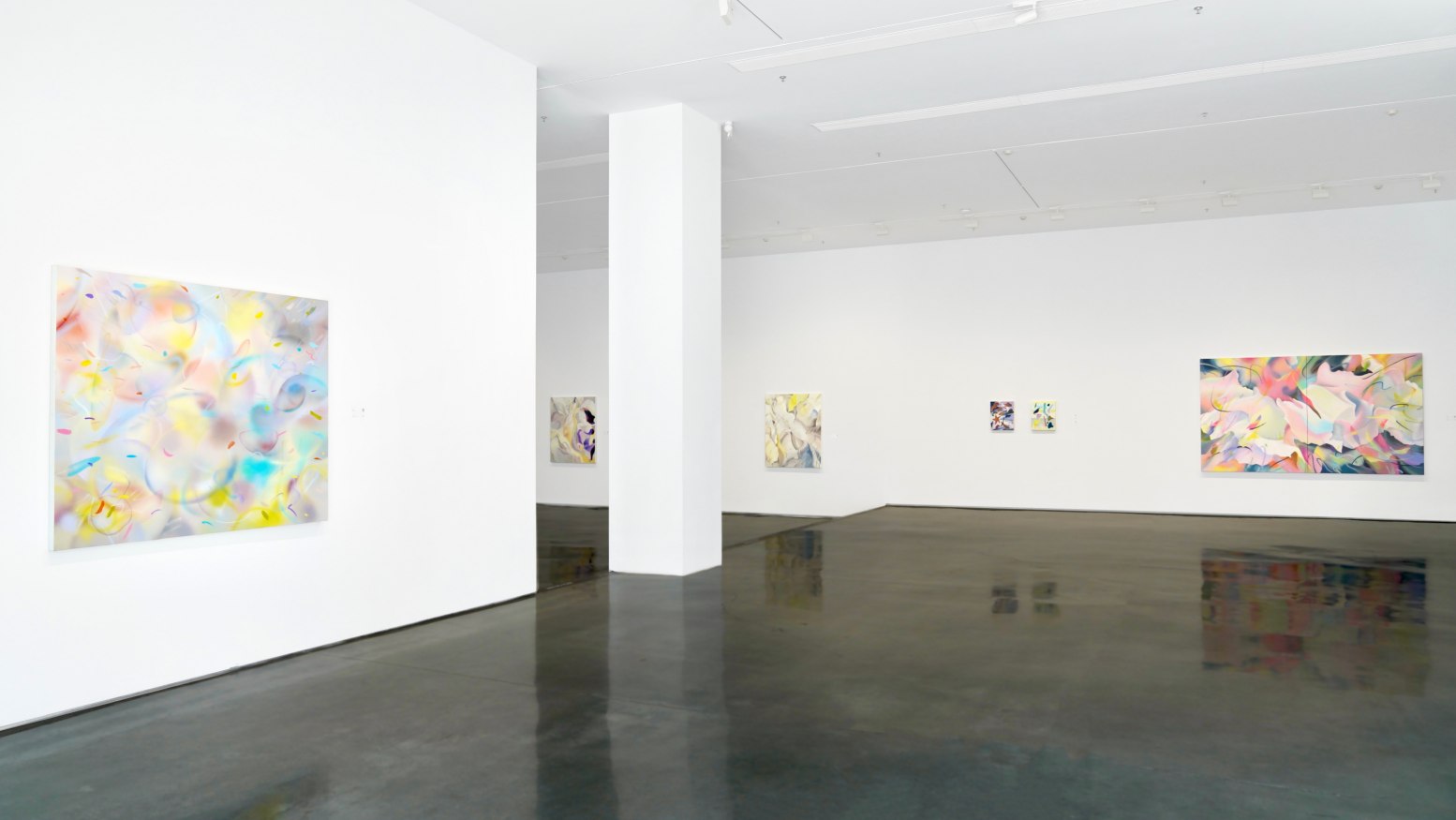
The solo exhibition project "Moonlight Wish" at ARCH GALLERY has already concluded. On this occasion, ARCH CHANNEL conducted a dialogue with artist Danqing Xu, covering discussions on the exhibition's theme and exploring the artist's new experiences and insights following changes in life patterns. New vitality grows from past experiences—how do we resist with love in this crazy era?
This post is available in both video and text formats, making it easy for friends who were unable to attend the exhibition to browse the content.
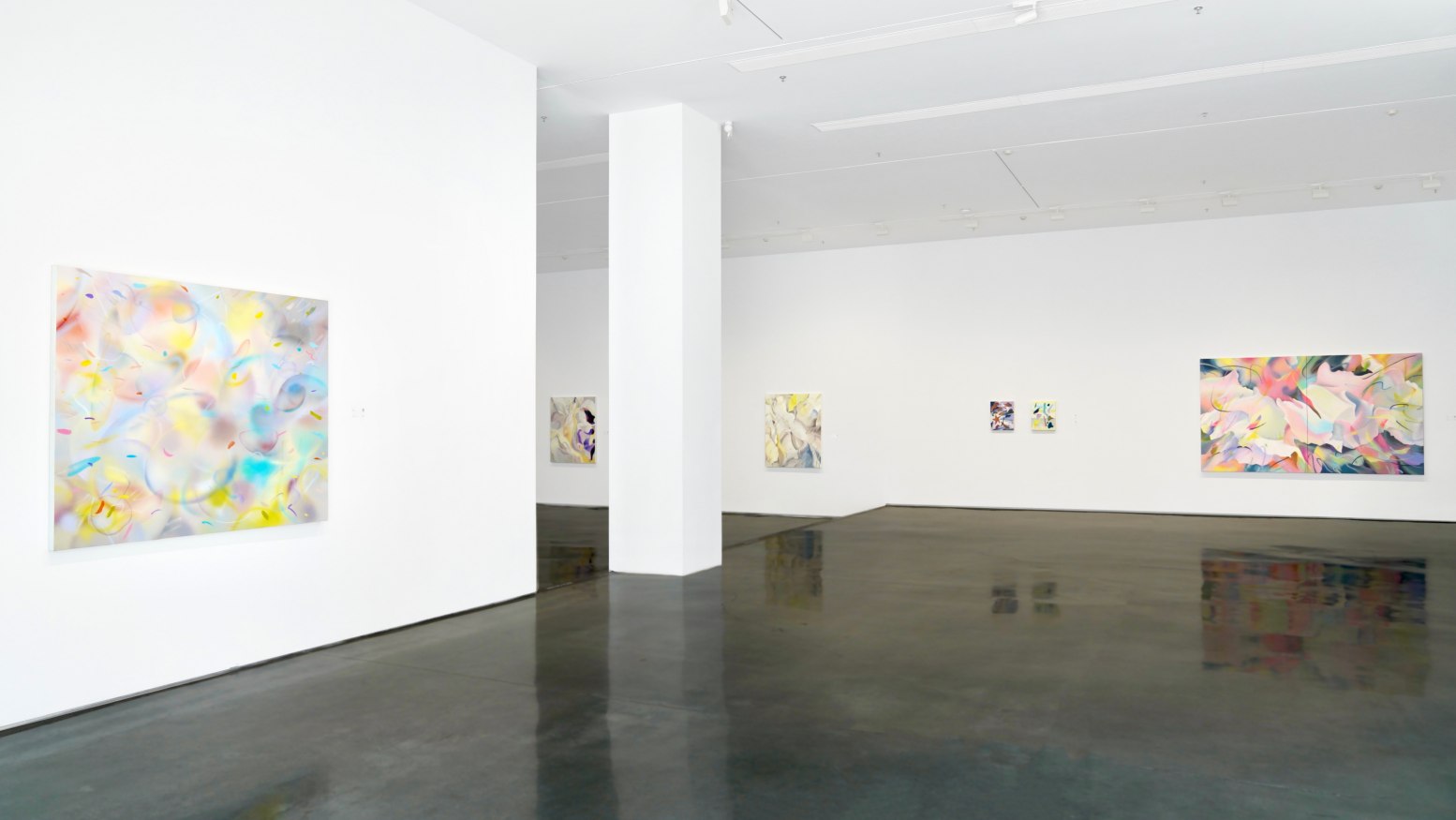
ARTIST INTERVIEW
Q: ARCH CHANNEL
A: Danqing XU
Q1: Let’s start by sharing the origin of the exhibition’s theme name.
A:Last May, "moon" was the first complex word my daughter could say, and I could barely transcribe her pronunciation even with pinyin. It sounded a bit like "yuan liang" (a near-homophone for "wish-bright" in Chinese). That conversation is a voice diary I’ve listened to countless times.
This exhibition is also a kind of diary, documenting a year that can never be replicated.
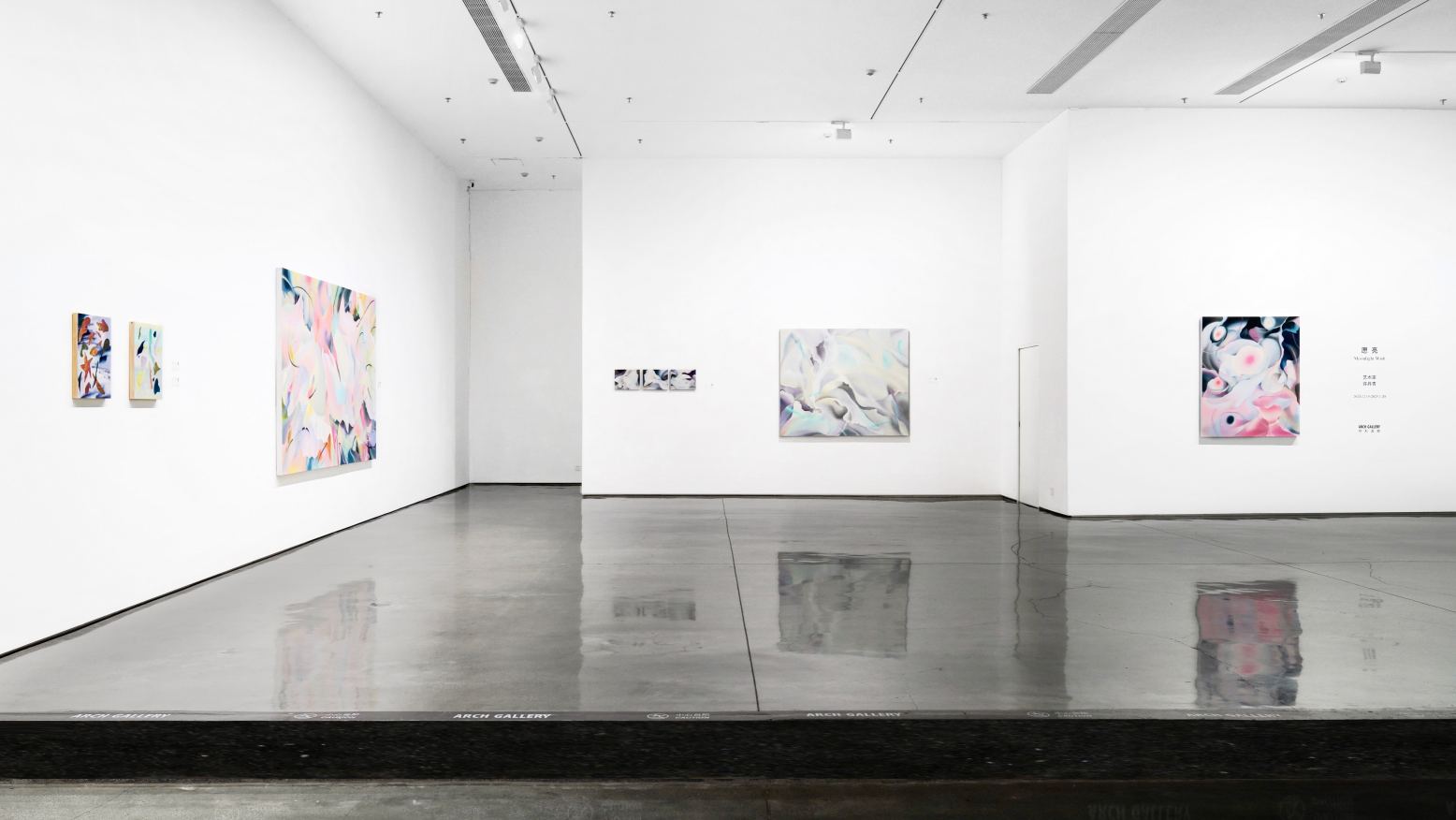
Q2: For this solo exhibition "Moonlight Wish", what are the key perspectives you most want to share?
A:In an era where information changes in the blink of an eye, and the system of traditional values is constantly questioned, replaced, and even discarded, what should we do to resist those "beautiful traps"?
This solo exhibition is a very small starting point. What this starting point holds is "love". Even if we let go of everything, we can never abandon "love" and humanity’s most fundamental values—honesty, diligence, creativity, independence, kindness, and so on. After a year of parenting, I want to say that if each of us can start from love, it may be the most prudent attitude for ordinary people to face this crazy era.
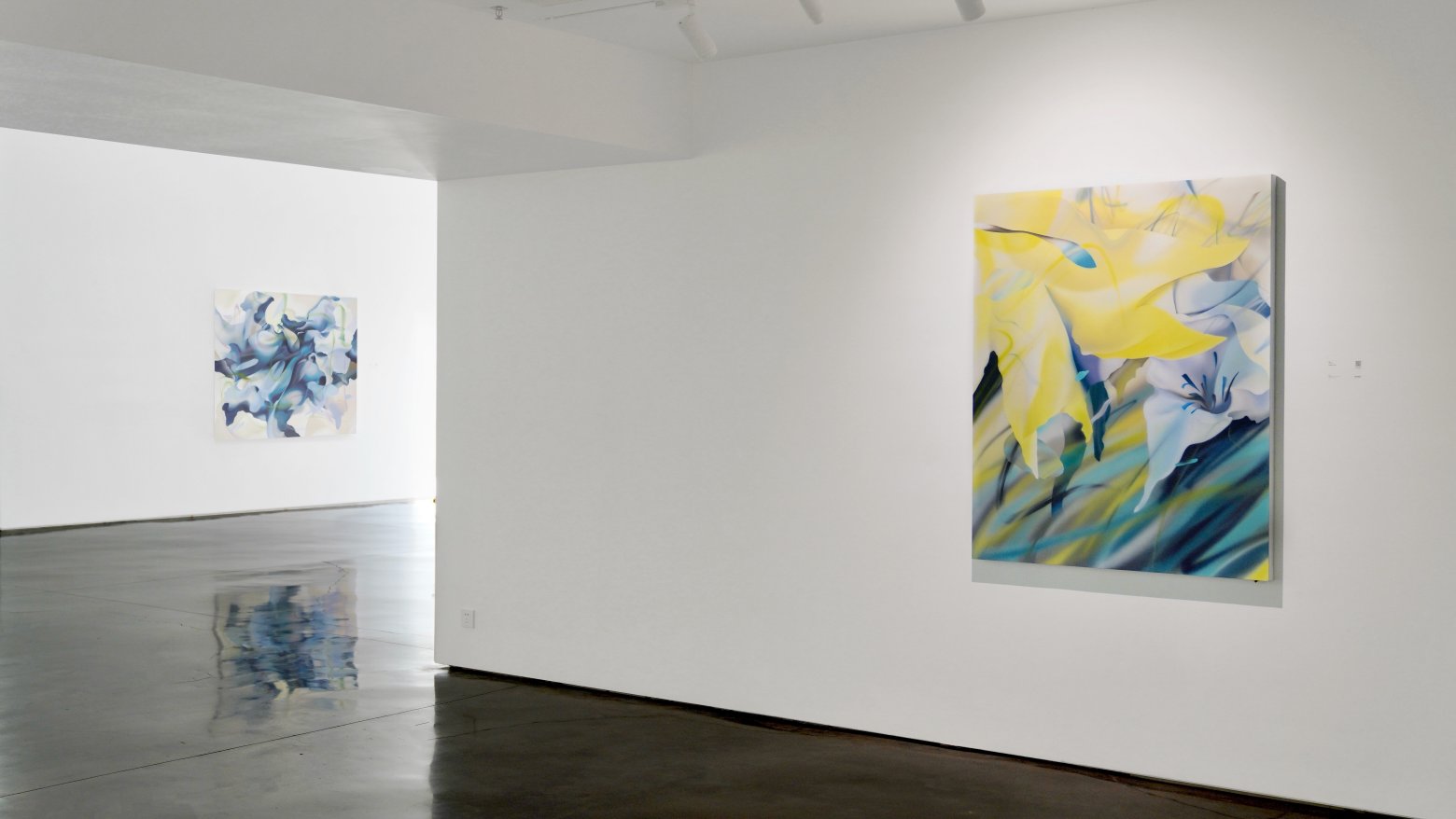
Q3:In your consistent painting language, interactions with your daughter have become a new source of creative inspiration. What insights has the infusion of love’s energy brought you?
A:With her in my life, only then did I realize there are flight paths above our home. We often watch planes together, observe ants, cut paper randomly, and so on—those little things shine brightly because of love.
I’m not a natural optimist, but this year, we’ve been reflecting this joy onto each other: a happy mom and a happy child. The vitality in her has influenced my creative work, so this year, my works have shown overall diversity in their visual effects, and I’ve also experimented more with my painting techniques. Compared to before, I’ve become more daring.
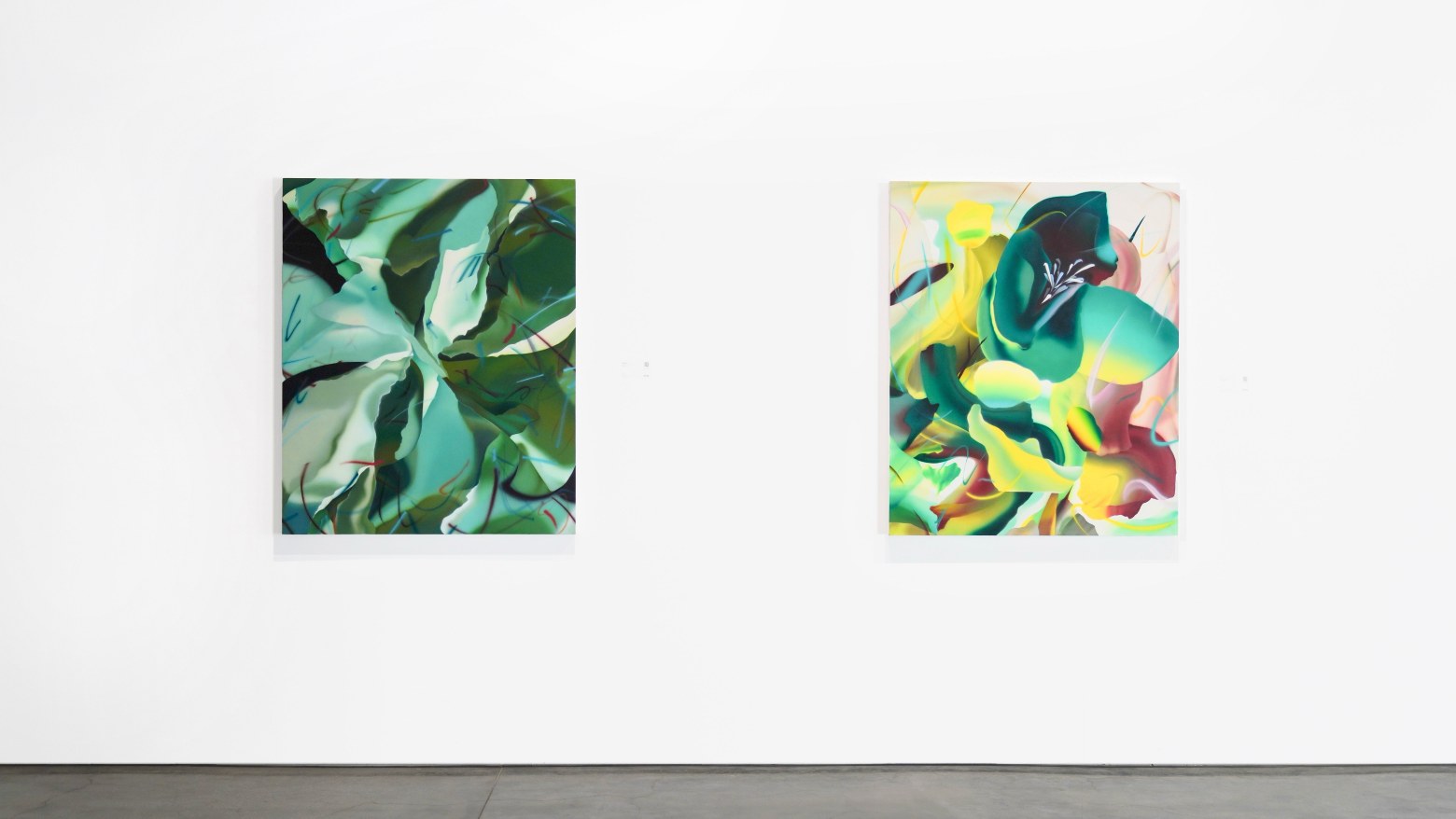
Q4:During your creative process, how do you select and utilize different materials and techniques based on the specific needs of your works? How do you balance the physical properties of materials with the aesthetic needs of your works in the course of creation? Additionally, how do you consider color relationships?
A:The colors seeping through the gaps when using a spray gun, and the soft, hazy effect of light and shadow created by such natural transitions—this is still what the works require at present. To emphasize the subtle changes brought about by overlapping colors, there are many refinements in the techniques. Whether a line is evenly sprayed or not results in quite different effects. But I’m not someone who obsesses over researching materials. The choice of materials is basically determined by the needs of the works. For example, I like using sponges for sketches because they can naturally press out irregular edges on tracing paper without deliberate effort. So this question should be reversed: I choose materials to serve the expression of the works.
I arrange the color layout according to the visual flow, such as left to right, focused or scattered. Standing in front of the work, as viewers' eyes move across the image, I believe they actively participate in a dialogue with the painting. And while the work is static, as long as we immerse ourselves in looking at it, the colors will become more vivid. At first glance, a certain area may seem like a single color, but you might notice it’s not a simple color block—even the slightest subtle color variations within can set the area in motion.
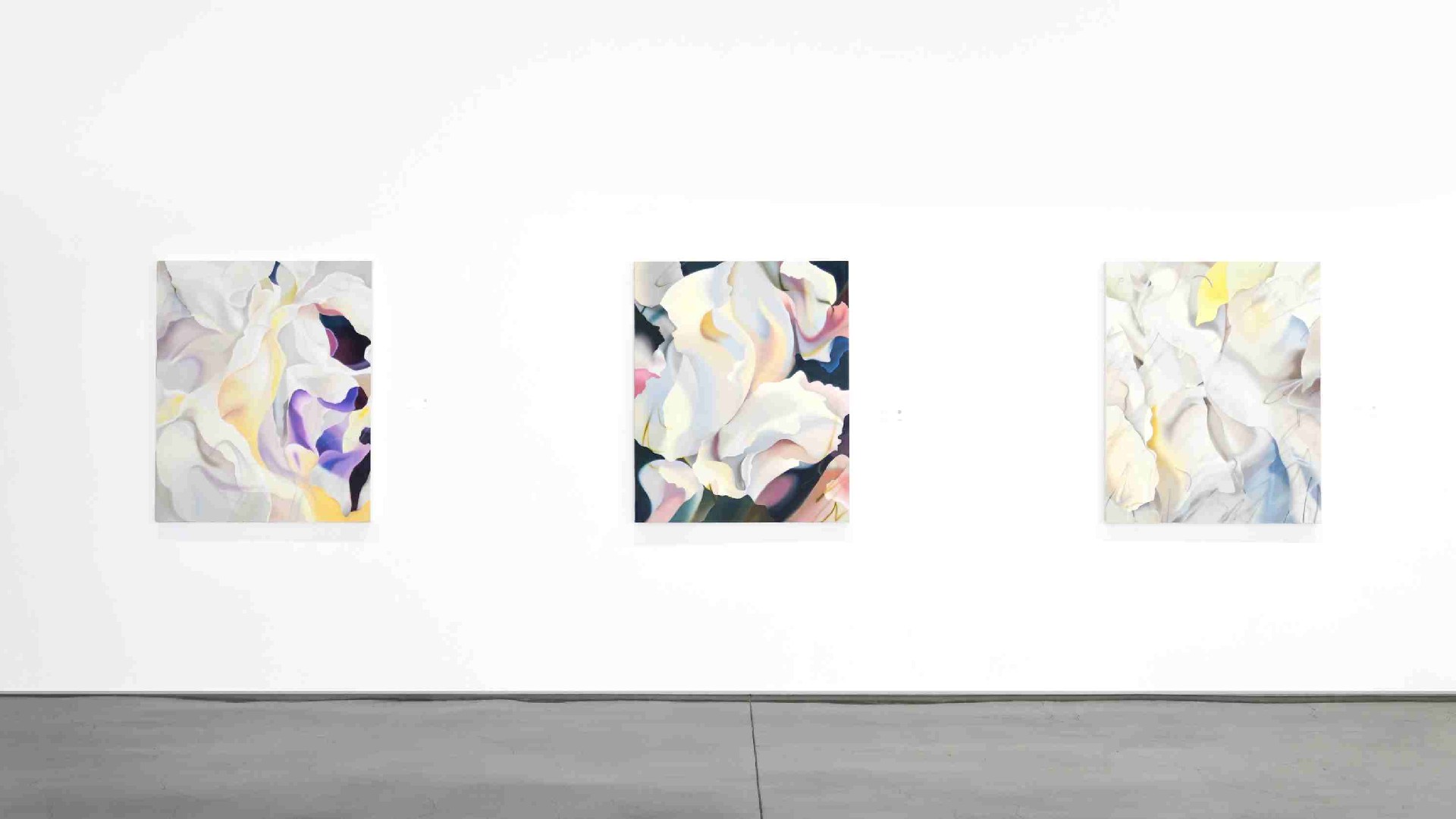
Q5:You have a large number of sketches or small-scale colored pencil works, and they are usually highly similar in style. What position do you think "intuitive" creation occupies in your creative process?
A:It’s an essential process in painting. I think even if you only draw one line, if that line helps your subsequent creation, it must be called a sketch. Sketches are meant to reduce errors in imagination. When I look at myself from a distance, inspiration sometimes slips away. Seizing it quickly is crucial. This year’s sketches are all simple, and I’ve become more confident in larger paintings this year, more improvisational too.
This year, the proportion of randomness in my works has increased. Pieces in the exhibition like Swan, Toys, and Now is the time 1/2 are all highly random—I painted them quickly once the idea came. After finishing, I shared them with friends who know jazz and would joke with them, “I can improvise too now.” I know clearly that such “spontaneity” actually stems from the “intuitive experience” gained through extensive previous creation.
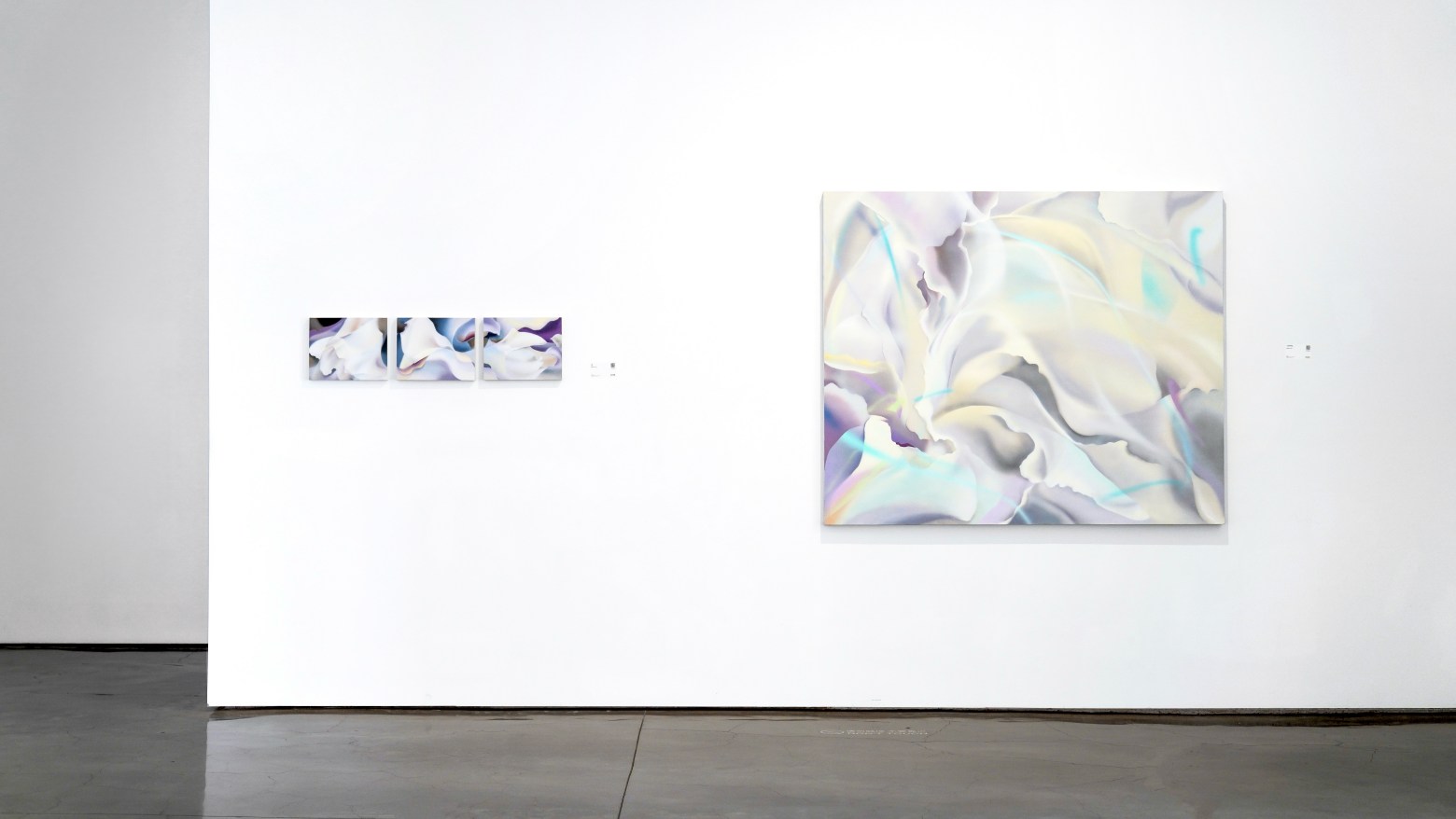
Q6:Your paintings in this phase still carry forward the expression of musical rhythm from your previous works. Could you please describe the relationship between your painting and music?
A:My works aren’t created because of music; it’s just that the visual effect of the paintings has musicality. I think abstraction and music are essentially the same thing. Is there a difference between musicians who bring life to sheet music and artists who bring life to colors? When I’m figuring out how to grasp the rhythm of a painting, what comes to mind is musical rhythm—jazz and classical music. I carefully deliberate on the breathing-like feel of music and the balance in color use; they’re so subtle that they’re indescribable. I also experience light, smell, and so on. The integration of senses is also important. I really wonder what Mondrian was thinking when he created Broadway Boogie-Woogie?
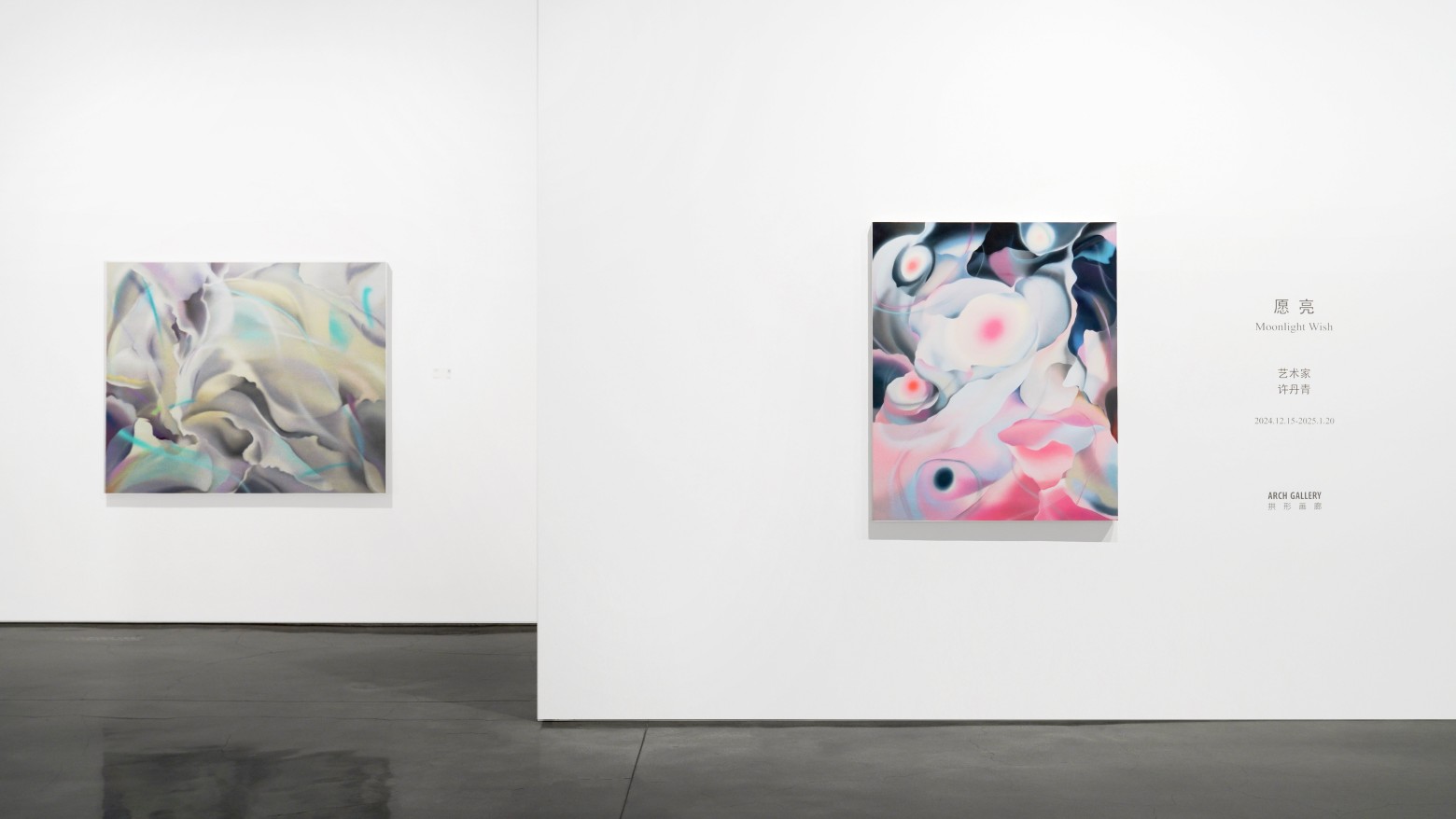
Q7:When a work is nearly finished, do the unexpected effects in the painting instead become what interests you most? How do you view these uncertainties and chance occurrences?
A:Uncertainties and chance occurrences in the painting process are precious, but they aren’t what I pursue. I believe such chance occurrences must undergo a transformation through subjective consciousness to become true creation. In the past, my painting experience involved preparing a work in advance—I took sketches seriously from the start, and once a sketch was finished, I could basically imagine the effect of the final piece. I controlled my compositions, and even so, unexpected effects still emerged during the painting process.
Natural effects are certainly beautiful, but in the past, they often passed me by. Now I want to seize them. For example, in Flying Fish, a work I created this year, the waterfall in the painting is a trace from previous creative processes; when I look at Katsushika Hokusai’s depictions of waterfalls, I feel a strong desire to paint. In Bubbles from this exhibition, some color blocks came from afternoon light and shadow falling on the canvas, which I captured. I still can’t transform the essence of some chance occurrences into my own skills, but I can with others, or I’m still figuring them out. Because if done poorly, it will feel contrived. Turning chance and uncertainty into one’s own painting language requires practice.
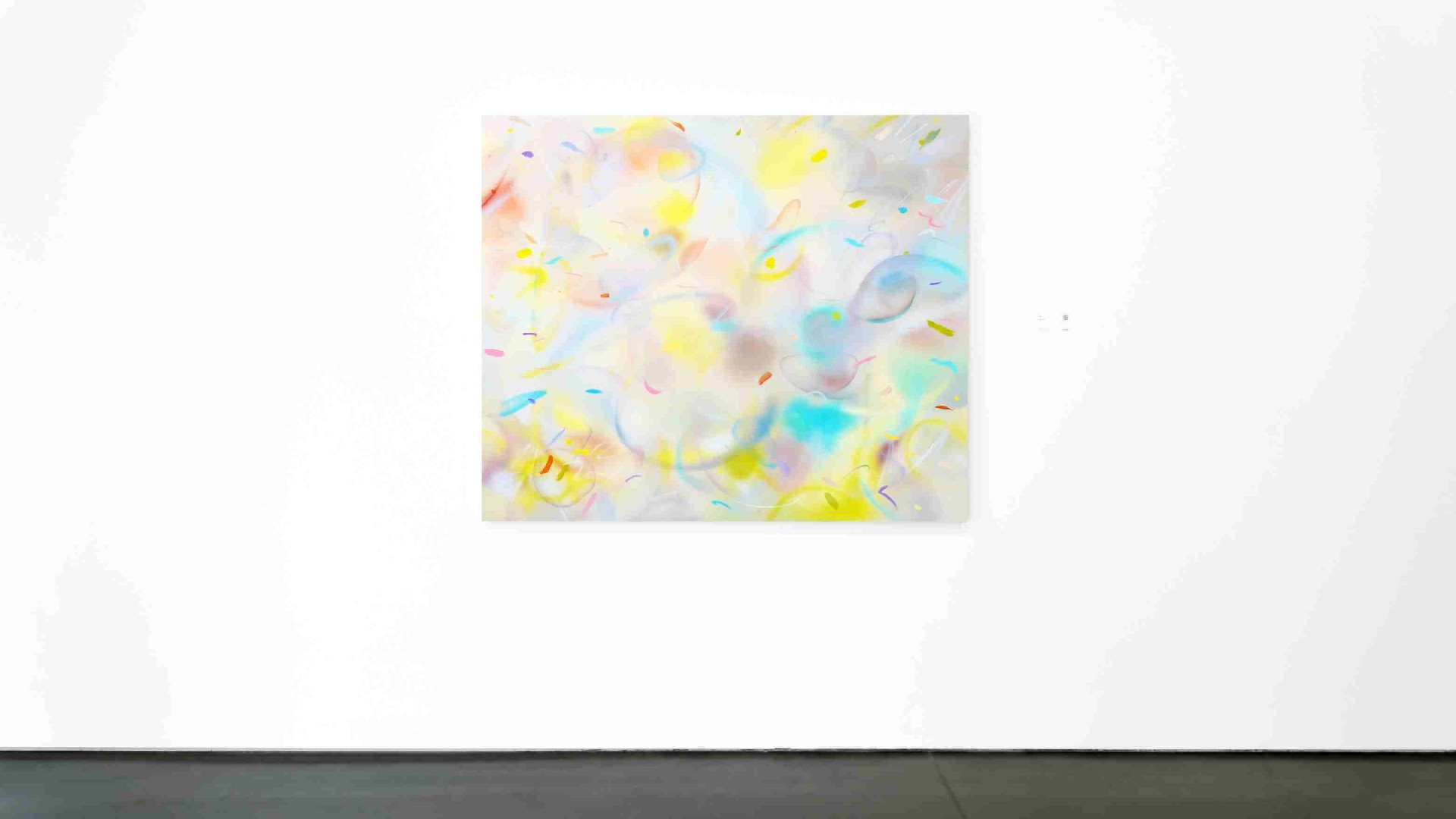
Q8:In this new year, what thoughts have the new identity experiences brought to you? What specific new changes have emerged? You can also talk to us about those reflected in the images.
A:Translation: It’s quite interesting. In terms of time, there’s no room for “me.” This year, I couldn’t even control the quality of my sleep—two-thirds of each day belonged entirely to my child. In terms of space, there’s no room for “me” either. I didn’t have extra time to arrange the home environment I wanted; every day was stuck in a routine between two fixed points. But in terms of self-perception, “I” have become richer and fuller.
This year, the relationship between me and my sense of self was like that between me and driftwood at sea: the harder things got, the tighter I clung to it, and gradually, I came to understand myself better. I love a peaceful life and passionate creation. A peaceful life gives a sense of security to my creation, so this year, my creative process became more spontaneous. Unlike viewers, I’ve been part of the entire painting process, and I really enjoy the decisive feeling of acting on an idea as soon as it comes. The degree of completion of the work is no longer my sole pursuit. I hope each piece of work has its own shining moments.
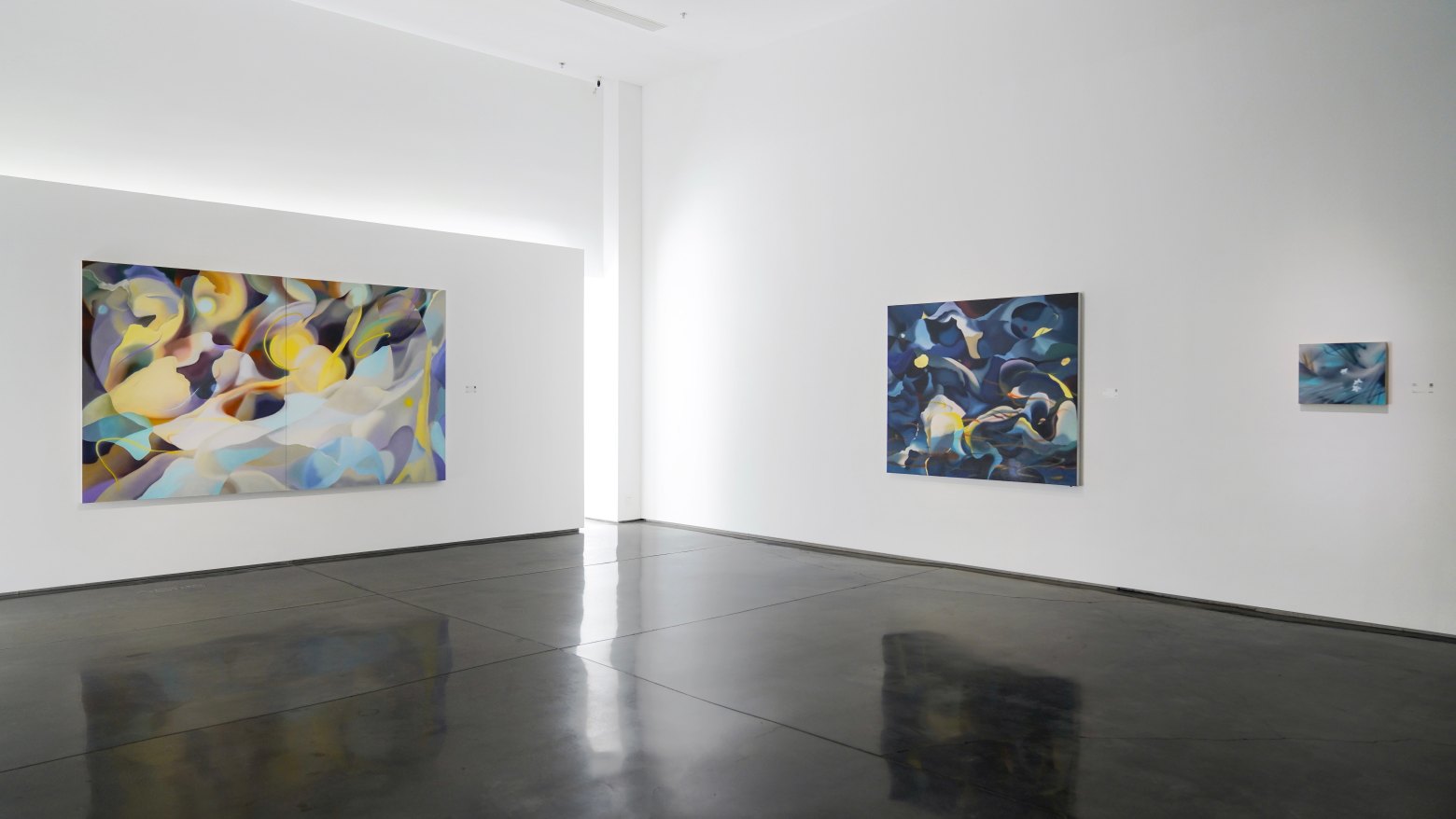
Q9:What has been the biggest challenge you’ve faced in your creative work this new year and in preparing for your solo exhibition?
A:At first, I thought not having enough time was the biggest issue. So this year, I chose to live a consistent, structured life—and this routine reduced the mental drain from managing time, which has been crucial. I once saw "parenting" and "preparing for the solo exhibition" as two huge mountains to climb, but little did I know this structure would let me give my child adequate quality time while my work efficiency improved too. A long time ago, I learned that Haruki Murakami works this way: when writing a novel, even if he feels he could keep going, he stops writing decisively. That way, it’s easier to get into the groove the next day when he starts again. He, in turn, was influenced by Hemingway—sticking to the routine and never disrupting the rhythm. Little did I expect that years later, I’d also start putting this lifestyle and work approach into practice. Going forward, I’ll of course remain a believer in structured living, and I’ll add exercise and travel to my plans for the new year.
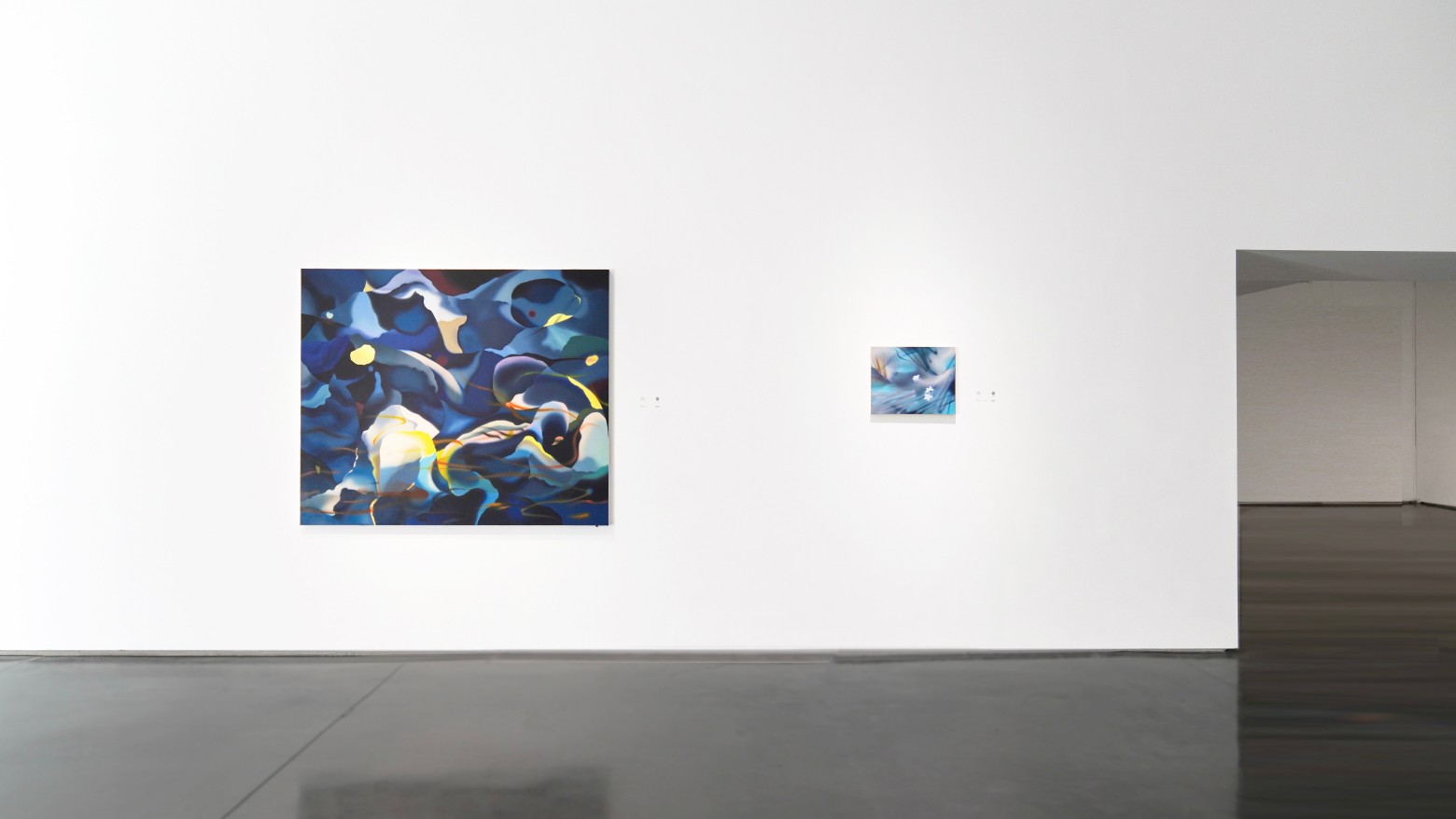
Q10:Do you have any creeds you adhere to in your creative work?
A:Mustn’t be dull. That’s what I keep reminding myself of in my creative work.
